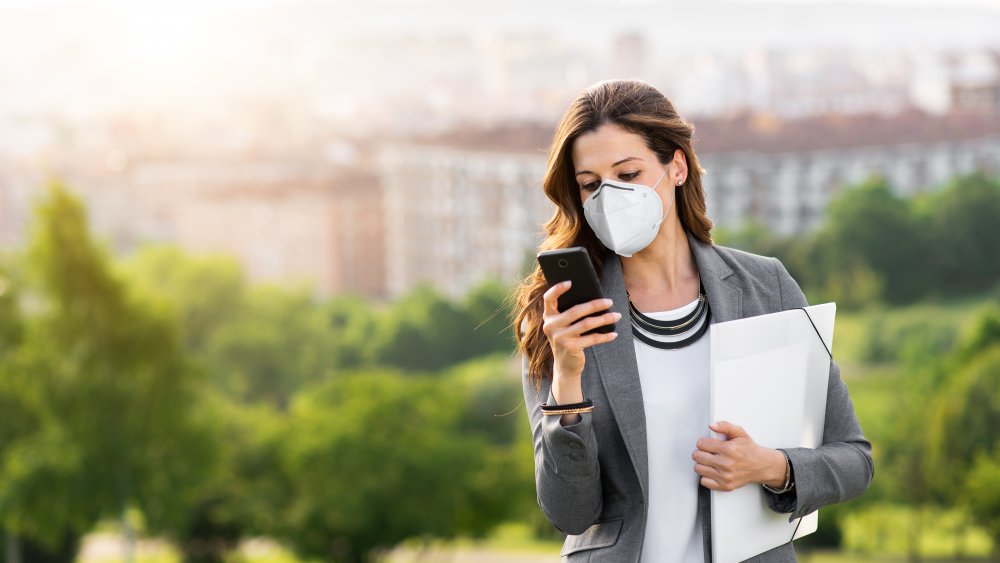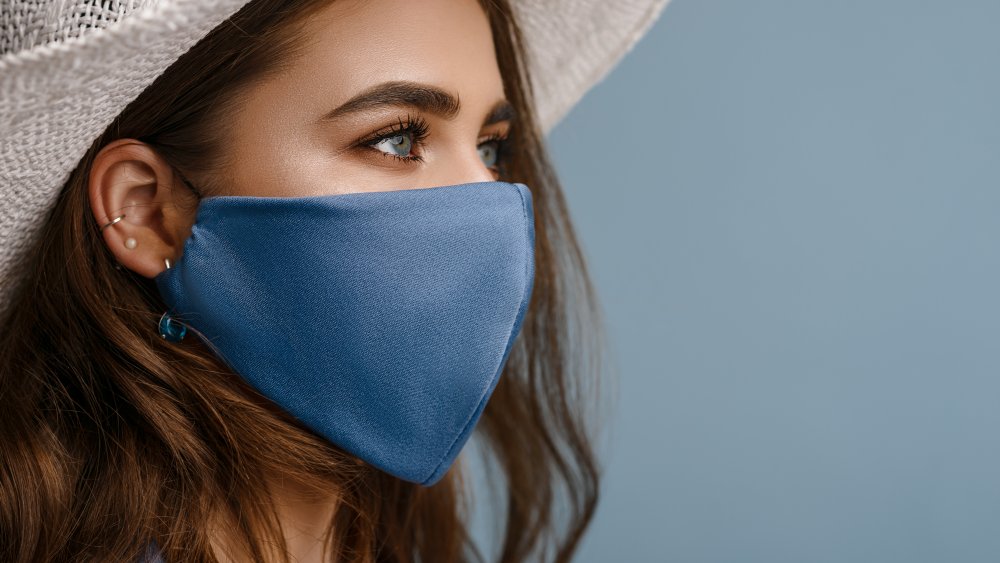Why You Should Wear A Mask Even If You're 6 Feet Away
Wearing a face mask when you're in a crowd is a no-brainer. The Centers for Disease Control and Prevention makes this very clear: "CDC recommends that people wear masks in public settings, like on public and mass transportation, at events and gatherings, and anywhere they will be around other people," it states on its website. But what about when there are some people nearby, but you're not exactly standing nose-to-nose with a bunch of strangers? Can't you take off your mask then for a little air? Actually, you'd be better off leaving it on, health experts say. "There's no invisible force field at 6 feet," Saskia Popescu, an infectious disease expert at George Mason University, told U.S. News & World Report.
According to the CDC, the spread of coronavirus beyond 6 feet is less likely, not impossible — especially if you're indoors, in a poorly ventilated place. Earlier this month, the agency acknowledged that airborne transmission is one of the ways COVID-19 can be spread, and that can happen at distances greater than 6 feet. "Pathogens that are mainly transmitted through close contact (i.e., contact transmission and droplet transmission) can sometimes also be spread via airborne transmission under special circumstances," the CDC reported, noting that events with singing, shouting, and exercising all had been linked to airborne transmission.
Wear a mask to be 'better safe than sorry,' according to experts
But what about if no one is singing, shouting, or exercising? This is a confusing gray area, disease specialists concede. In an interview with PBS, Julie Fischer, a professor of microbiology and immunology at Georgetown University and the chair of the Global Health Security Agenda Consortium, which focuses on responding to the threat of infectious disease, said there are so many unknowns — not just about the spread of the disease beyond 6 feet, but also whether it's safe to skip the mask when you're outdoors. "I wish there were a really clear answer, like 'inside is dangerous, outside is safe.' But the answer is, being in close proximity to people whose status you don't know is a risk," she said.
Lisa M. Lee, a public health expert at Virginia Tech, agreed. "The reason this stuff is so confusing is people want clear answers, and there's not a straightforward answer," she said, adding that social distancing and other precautions are a way to be safe rather than sorry. "And your mask is your basic layer," Lee added.


